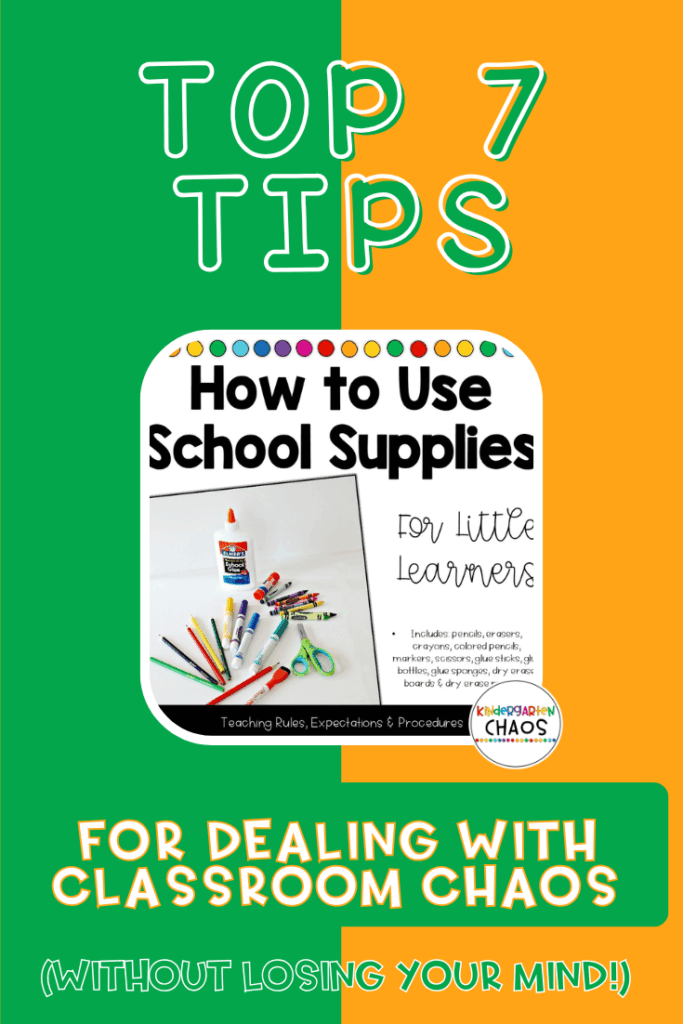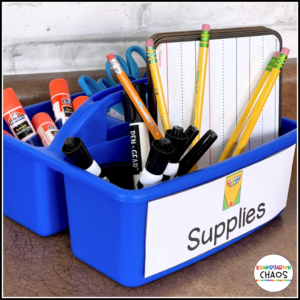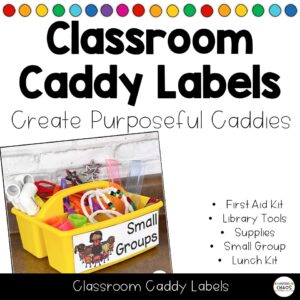Teaching Pre-K, Kindergarten, or 1st grade is rewarding, but let’s be honest—it’s also messy, noisy, and sometimes overwhelming! Whether you’re in the classroom or homeschooling, you’ll face moments of chaos: students wiggling during circle time, centers that look like a tornado hit them, or little learners struggling with transitions.
Don’t worry—you’re not alone. With the right systems and strategies, you can turn classroom chaos into calm. Here are my Top 7 Tips for Dealing with the Everyday Chaos of Teaching Little Learners.

1. Set Clear Routines (and Practice, Practice, Practice)
Kids thrive on structure! Establish morning routines, center rotations, and cleanup procedures from day one.
Model exactly what you want.
Use visuals (charts, cards, or even real photos).
Revisit routines after long breaks.
👉 Pro tip: Keep directions short and sweet. Five-year-olds have five-year-old attention spans!
Check out these previous posts for more ideas and techniques: Morning Routine Tips to Start the Day Smoothly and Surviving the Chaos: End of August and First Month of School Activities for Kindergarten.
2. Use Music & Movement for Transitions
Transitions are often the messiest part of the day. Music helps!
Play a clean-up song when it’s time to tidy up.
Use chants or claps to grab attention.
Add brain breaks with GoNoodle or simple movement games.
Fun transitions keep kids engaged while preventing chaos. Here are some more tips: GoNoodle Ideas for the Classroom and How To Ensure Smooth Transitions In Kindergarten
3. Create Community Supply Stations
Forget individual desks stuffed with crayons and scraps of paper. Community supplies = less clutter and easier cleanup.
Color-code bins (red scissors in the red bin).
Keep sharpened pencils in one place.
Teach responsibility by assigning “supply helpers.”
7 Simple Ways to Help Little Learners Stay Organized (Without the Chaos!) has more ideas. Read now!!

4. Label Everything (with Words & Pictures)
Little learners need visual cues to stay organized. A print-rich classroom makes independence possible.
Use real photos plus labels for non-readers.
Label shelves, bins, cubbies, and even table groups.

5. Break Tasks into Small Steps
Big jobs overwhelm little learners. Break it down!
Instead of “clean the room,” say: 1. Put crayons in the red bin. 2. Push in your chair. 3. Line up quietly.
Celebrate small successes to build independence.
6. Stay Digitally Organized (Teacher Hack!)
Your systems matter, too! Keep your teacher life organized with Google Drive.
Create folders by subject, week, or theme.
Store lesson plans, ESGI data, and centers in one spot.
Easy access means less stress when you’re planning.
7. Use Positive Reinforcement
Nothing motivates like encouragement!
Praise specific behaviors (“I love how Maria pushed in her chair”).
Try sticker charts, treasure boxes, or class rewards.
Build a positive classroom community where kids want to do their best. (How to Build Classroom Community in the First 30 Days of Kindergarten)
Final Thoughts
Teaching little learners doesn’t mean living in chaos. With clear routines, community supplies, labels, music, and intentional teacher organization, you can create a learning environment that feels calm, structured, and joyful.

-
Back to School Editable Kit for Meet the Teacher Open House Forms Letters
$5.00 -
How To Use School Supplies – Rules, Procedures, & Expectations – Back to School
$4.00 -
Organization Labels for Classroom Supplies Materials Games EDITABLE
$6.50 -
Alphabet Posters with Real Non-Fiction Pictures – Short Long Vowel
$5.00 -
Fine Motor Activities for Back to School in Kindergarten | Preschool | Pre K
$3.00





